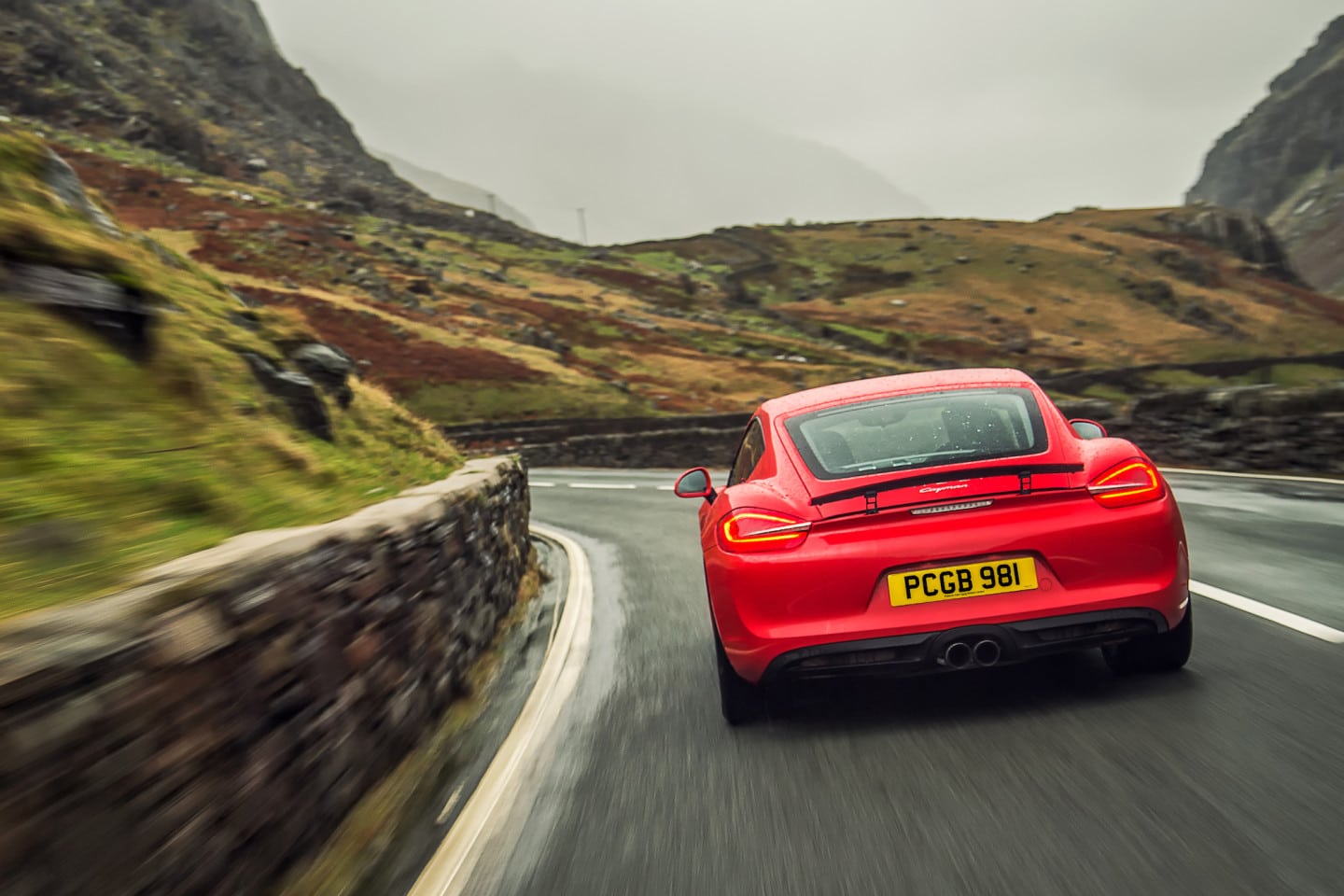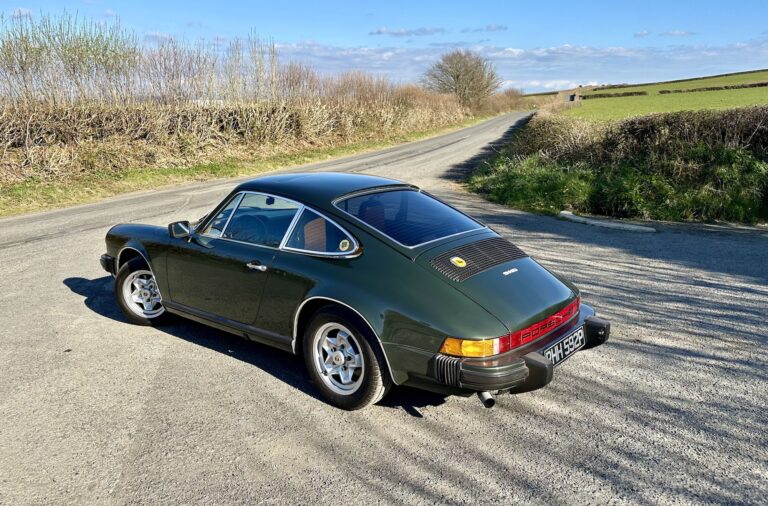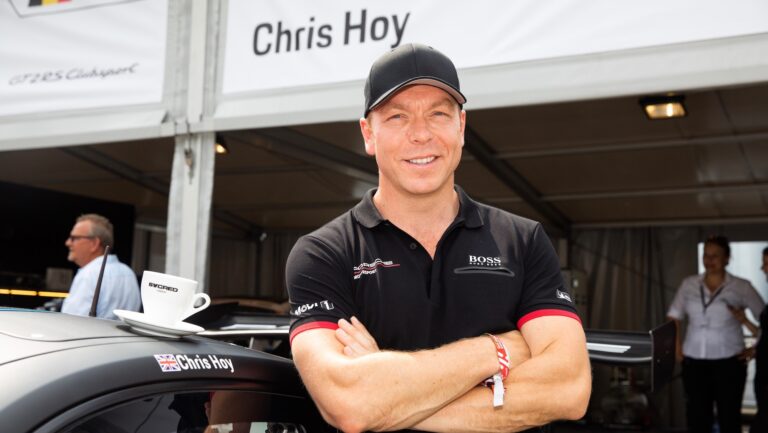 By Lee Sibley
2 years ago
By Lee Sibley
2 years ago
Buying a Porsche 981 Boxster / Cayman
9WERKS presents the need-to-know facts about buying a 981-generation Boxster or Cayman, with expert advice from Philip Raby Porsche and RPM Technik
Why should you buy one?
The 981 Porsche Boxster and Cayman are modern enough to drive every day, or special enough to save for weekends. They’re durable and relatively affordable, too.
How does the 981 Boxster and Cayman drive?
‘Brilliantly’ is perhaps the most succinct answer to that question. The 981, produced from 2012 to 2016, was a more grown-up sports car than the 986 Boxster (1996-2004) and 987 Boxster/Cayman (2004-2012), but it didn’t lose its focus or sense of fun. Also, unlike the current 982 (commonly known as the 718), all versions of the 981 have a fully fledged flat-six engine. Amen to that.
Reviewing the Boxster S for CAR magazine in 2012, Ben Barry said: “The Boxster was always class-leading in the chassis department, but there’s a renewed keenness to the way it changes direction, the nose darting this way and that with absolute immediacy. And when the rear does break away, it feels incredibly balanced and controllable”. Now a Total 911 contributor, Ben concluded by saying: “We wouldn’t hesitate to recommend it”.
Our 9WERKS-affiliated Porsche specialists are inclined to agree. Will Jameson of Philip Raby Specialist Cars says “A 911 is more challenging, with less margin for error. The 981 is a car anybody can enjoy, regardless of their driving ability.”
Ollie Barclay, head technician at Philip Raby, says the car still feels fresh, despite its advancing years. “Many examples of the 986 and 987 seem a bit tired now, but the 981’s suspension tends to be very robust – and you really feel that on the road.”
Power outputs range from 265hp in the Boxster 2.7 to 385hp in the Cayman GT4. Yet regardless of which model you choose, or whether you opt for the tactile manual gearbox or rapid-fire PDK, the six-cylinder engine is key to the 981’s appeal. “The naturally aspirated throttle response is just magic,” says Greig Daly, sales director at RPM Technik. “They sound fantastic as well.”
Indeed, as a driving machine, Greig places the original 981 GT4 among his top five Porsches ever. That’s high praise from a man who regularly gets to drive 911s with ‘GT3’ and ‘RS’ suffixes.
Categories
Porsche 981 Boxster and Cayman: evolution of tech
Both the 981 Boxster and Cayman were unveiled at the Geneva Motor Show in March 2012, but the soft-top would arrive in showrooms first. With styling that drew upon the 991 and Carrera GT, the basic Boxster was 29mm longer but 35kg lighter than its 987 predecessor. A 60mm longer wheelbase aided comfort and stability, while a 40 percent stiffer body helped sharpen the handling. Electric steering made its debut on Porsche’s smallest sports cars, too.
Interestingly, engine capacity shrank from 2.9 to 2.7 litres in entry-level models, but the S remained at 3.4 litres. Power outputs improved across the board, while each version of the Cayman produced a token 10hp more than the equivalent Boxster (perhaps helping Porsche dealers justify a price premium of around £2,500 for the coupe).
A new GTS specification was introduced in 2014, following the example set by the 911. For a modest extra £5,840, the list of added equipment included Porsche Active Suspension Management (PASM), 20-inch alloy wheels, sports seats, the Sport Chrono Pack, active engine mounts and dynamic headlights. Not forgetting an extra 15hp, of course.
The GT4 arrived in 2015, finally unleashing the full potential of the 981 as a driver’s car. It boasted downforce-inducing aero addenda, a wider track, GT3-derived suspension and the 3.8-litre flat-six from the 991 Carrera S. The Boxster Spyder combined the same powertrain with a slightly softer chassis and rudimentary canvas roof.
The 981 remained largely unchanged during its four years in production. Porsche did make periodic updates to the PCM media system, but many owners today will switch to an aftermarket unit with Apple CarPlay and/or Android Auto smartphone connectivity.
What to look for when buying a 981 Boxster or Cayman
As ever, our first piece of advice is to buy from a Porsche specialist, such as those advertising in the 9WERKS Marketplace. You will likely pay more than for a private sale, but the car will have been professionally inspected and come with a warranty. RPM Technik’s Greig says 981 values are “really stable”, and they cover a broad spectrum. Budget anything from £25,000 for a usable Boxster 2.7 to around £85,000 for a pampered, low-mileage GT4.
Ollie from Philip Raby says: “The cars don’t have an Achilles’ heel. Most of the issues are minor.” These can include corrosion around the spark plugs, oil leaks from the sump and rusted brake bleed nipples (the latter potentially needing replacement of the brake calliper). Air conditioning condensers can also fail, so test the air-con while driving and peer through the vents in the front bumper. “If there’s a big wet patch on the condenser, it’s probably leaking.”
Speaking of leaks, the 981’s water pump can be problematic, as can the seal between the pump and the engine block, and changing either involves bleeding the whole cooling system. Check underneath the car for puddles after a brisk drive. If your Porsche is incontinent, remedial work will be required.
Greig says the heater fan can stop working if it hasn’t been used for a while, although fixing it is a DIY job – as revealed by this video on the RPM Technik blog.
The switchable sports exhaust is another potential weak spot, adds Greig. The pin within the butterfly valve can corrode – and a stuck valve means you will need a complete new exhaust. If your chosen 981 has this option fitted, be sure to press the ‘exhaust’ button on the dashboard: “If the valve works, the difference in volume between open and closed will be immediately obvious,” explains Will. Note that replacing a faulty exhaust with an aftermarket system may invalidate your warranty.
Holding that thought, for a very reasonable £690 a year, Porsche offers an extended warranty on the Boxster and Cayma, valid for up to 15 years or 125,000 miles. Depending on the age of your car, that could potentially cover you until 2031. It’s worth considering, for added peace of mind.
Apart from an engine or gearbox rebuild, the most expensive job on a 981 may be replacing carbon ceramic brakes. If fitted, these should be professionally inspected before you buy. Cracked discs could set you back £1,000 per corner. You have been warned!
Will reckons a well-optioned S is the sweet-spot of the 981 range, while Greig rates the GTS as the best all-rounder. We’d simply buy the best car you can, taking into account mileage, condition and service history.
Porsche 981 Boxster and Cayman: the options worth having
20-inch alloy wheels
An inch larger than standard, they look better and the ride doesn’t suffer.
An inch larger than standard, they look better and the ride doesn’t suffer.
PASM suspension
The car sits 10mm lower, with adaptive dampers for improved ride and handling.
The car sits 10mm lower, with adaptive dampers for improved ride and handling.
Sport Chrono Pack
Offers Sport and Sport Plus drive modes, plus launch control on later cars.
Manual gearbox
Rarer than the PDK auto, and increasingly desirable now fewer 981s are daily-driven.
Sports exhaust
Amplifies the six-cylinder soundtrack, although it can be prone to faults (see above).
Carbon-ceramic brakes
Most likely fitted to a GT4, these are better suited to track days than standard steel discs.
Strong paint colours
Speed Yellow, Guards Red and GT Silver are all sought-after. White, grey and black are less so.
Leather trimmed dashboard
Adds a touch of class, and covers up some of the plastic.
Porsche 981 Boxster S: technical spec
Years produced: 2012-2016
Units produced: 18,297
Engine: Flat-six, 3,436cc, naturally aspirated
Power: 315hp @ 6,700rpm
Torque: 360Nm @ 4,500rpm
Compression ratio: 12.5:1
Transmission: 6-speed manual or 7-speed PDK auto
Suspension
Front: MacPherson struts
Rear: MacPherson struts, transverse and longitudinal control arms
Wheels and tyres
Front: 8×19-inch; 235/40/ZR19
Rear: 9.5×19-inch; 265/40/ZR19
Brakes
Front: 330mm discs
Rear: 299mm discs
Length: 4,374mm
Width: 1,801mm
Weight: 1,320kg (manual), 1,350kg (PDK)
0-62mph: 5.1 sec (manual), 5.0 sec (PDK)
Top speed: 173mph (manual), 172mph (PDK)























